Installing the Star mC-Print2 and mC-Print3 Receipt Printers
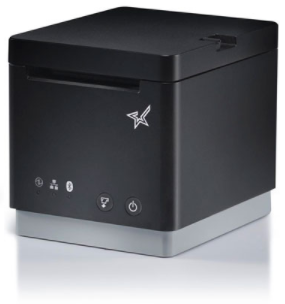
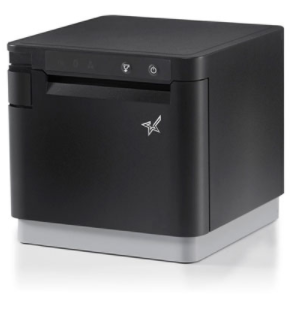
Before you begin
- Read our Meevo System Requirements and Supported Devices to ensure your computer and devices are compatible with Meevo.
- The mC-Print2 and mC-Print3 user guides contain important information and details from the manufacturer that are not discussed in this topic. MSI recommends you read your device documentation before proceeding with the installation.
Important: The IP address for a network receipt printer must be static and unique to that printer. Contact your network administrator to ensure that your printer's IP address will not change.
Step 1: Hook up the printer
Note: The instructions below describe how to set the printer up for LAN communication, which is the recommended configuration. These Star printers also offer a USB installation option, but there are restrictions when using USB connections. See the mC-Print2 or the mC-Print3 documentation for details.
- Place the printer in the desired location in your business. Make sure a power source (outlet, surge protector, etc.) and network Ethernet port are close by; these are needed to hook up the printer.
- Connect the LAN cable from the LAN port on the back of the receipt printer to a LAN port that is connected to your network.
- The LAN cable is shown below; its connector ends are wider than a telephone cord's.
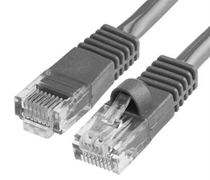
- LAN ports on the mC-Print2.
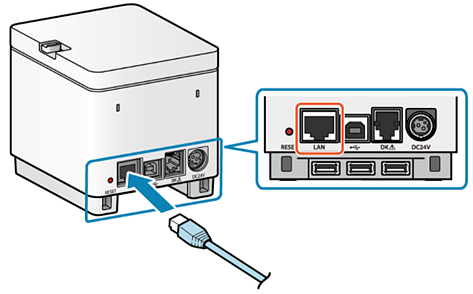
- LAN ports on the mC-Print3. Note that to access these ports, you'll need to remove the rear cover by inserting your fingernails into the clearances on the left and ride sides of the rear cover, and pull out both sides one by one.
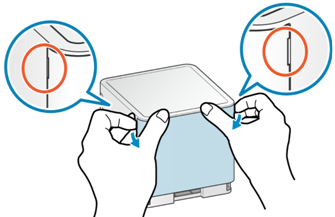
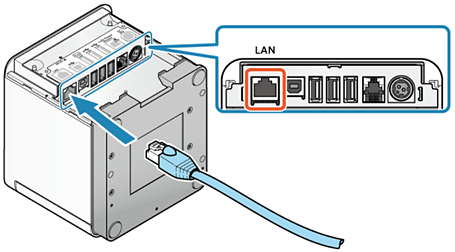
- The LAN cable is shown below; its connector ends are wider than a telephone cord's.
- If you are using a cash drawer, connect the cash drawer cable from the Drawer kickout port on the back of the receipt printer to the cash drawer.
- The cash drawer cable is shown below; it has two differently sized connector ends.
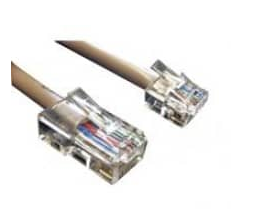
- Drawer kickout ports on the mC-Print2 (left) and mC-Print3 (right).

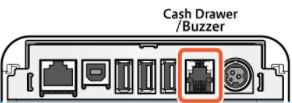
- The cash drawer cable is shown below; it has two differently sized connector ends.
- Ensure that the receipt printer power switch is in the "off" position, and then connect the power cable from the receipt printer to a wall outlet or surge protector. The AC Power ports on the mC-Print2 (left) and mC-Print 3 (right) are shown below.

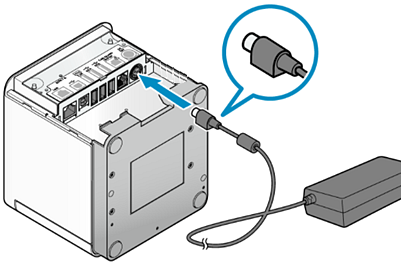
- Press and hold the Feed button (1) on the printer's control panel while simultaneously toggling the power switch (2) to "on." The startup or "boot" process begins when the Power and Error lights on the device begin flashing. At this point, you can release the Feed button and allow the device to finish booting. The Feed and Power buttons are shown below for the mC-Print2 (left) and mC-Print3 (right).
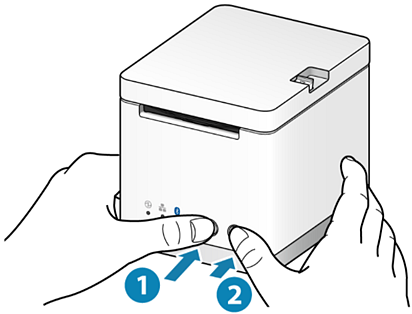

- Shortly after releasing the Feed button, the device will print an initial diagnostic receipt. This receipt may be fairly long in length. MSI recommends saving this receipt for reference, though it will not be needed for this setup.
- After the diagnostic receipt prints, wait another 30 seconds or so for the device to print a Network Configuration receipt. The bottom portion of this second receipt displays Current IP Parameters, including the device's IP address.
Important! This receipt contains network information that you will need for later steps. Put this receipt aside for now.

- Proceed to Step 2: Choose a setup mode.
Step 2: Choose a setup mode
Now that your receipt printer is connected to your network, the next step is to choose how you'll set up the printer on your computer or device. With networked printers such as this one, there are two different ways you can set it up. Meevo Help covers all steps for each setup type.
Trust Mode (recommended)
In Trust Mode, you will install an SSL certificate on each Star receipt printer and on each computer or device that will be using Meevo. Once installed, the SSL certificate tells your operating system that the printer is a trusted source. It ensures that Meevo and the receipt printer will communicate on-demand, when you need them to. Millennium Systems International recommends creating your own SSL certificate through the receipt printer's web interface, and then installing the certificate on each computer/device that will be using Meevo.
Benefits:
- Printing from Meevo is seamless; there is no need to always have a "printer connection" window minimized, as you would if you were using Connection Window Mode.
- After setting up the SSL and establishing trust between the printer and Meevo, there are no daily steps needed (unlike Non-Trust Mode).
Drawbacks:
- Requires you to create a self-signed certificate in the printer utility and to install that certificate on each computer or device that will be using Meevo, so of the two options, this one has more setup steps.
Note: If performing any of the steps below, it is recommended that you log in as a Local Administrator first. This ensures that non-admin users will have access to the SSL being installed.
- Make sure you have the receipt that has the printer's IP address (printed during installation).
- Type the printer's IP address into your browser to connect to the printer configuration utility. The address should look similar to this, but likely with different numbers:
192.168.1.456
Remember, if using an Ethernet cable to connect, enter the Ethernet Network IP address.
- Select Login and enter the default credentials provided with the printer. For most Star printers, these credentials are username: root and password: public. The printer home screen appears.
Note: As Star continuously updates their printer utility firmware, the screens below may look slightly different than what you see in your printer configuration utility. Even so, the location of menu items and steps below are applicable to all Star printer configuration utilities.
- Select SSL/TLS.
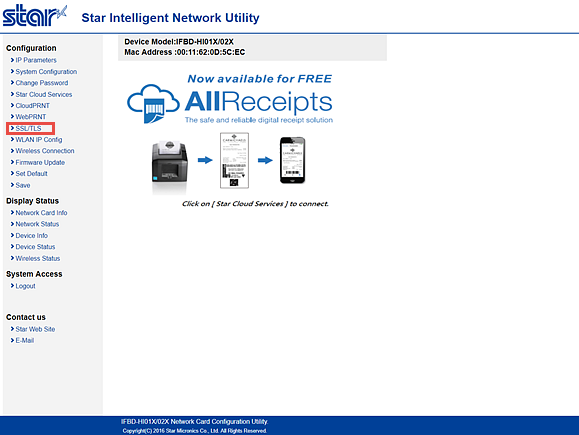
- Select Create Self-signed Certificate.

- Fill out the certificate fields. Use alphanumeric characters and spaces only for all fields except for Domain, which accepts periods. Using a special character in any of the other fields can result in certificate errors.
- Country Name: Enter your country's 2-letter code.
- State or Province Name: Enter your country's state or province.
- Locally Name: Enter your city or municipality.
- Organization Name: Enter the name of your business.
- Organization Unit Name: Enter the type of business (Salon, Spa, etc.).
- Domain: Enter the IP address exactly as it appears on the receipt printout from Step 1: Hook up the printer.
- Expiration Date: Make this 10 years from the current date.
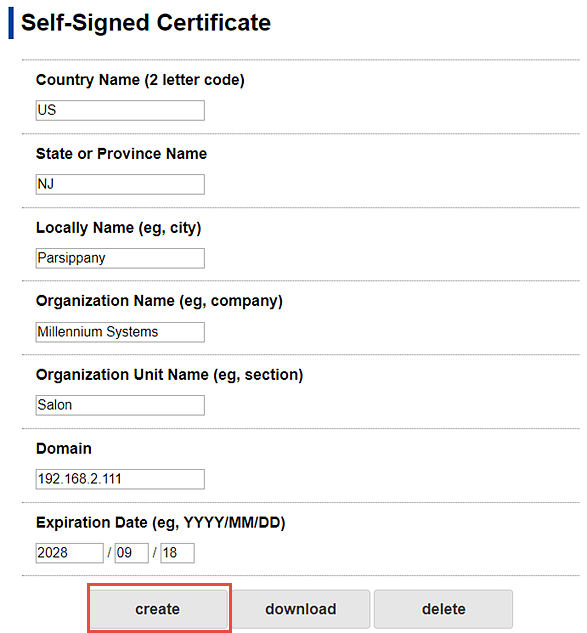
- Select Create. The screen below appears. In the red box, select Save.

- Select Save --> Configuration printing --> Restart device and select execute.

- The printer will print another Network Configuration receipt. In the middle of that receipt, the SSL/TLS section should read Certificate: Self Signed and Self-Signed Certificate: Exist.
- The SSL has been created on the receipt printer. Next, you'll want to proceed to Step 2b if you'll be using Meevo on a desktop PC, and/or proceed to Step 2c if you'll be using Meevo on an Apple device.
Note: If performing any of the steps below, it is recommended that you log in as a Local Administrator first. This ensures that non-admin users will have access to the SSL being installed.
- On a device that will be using Meevo, type the printer's IP address into your browser to connect to the printer configuration utility. Despite what your browser indicates, connecting to the printer is safe. Select Advanced, and then select Proceed to [IP address].

- Log into the utility using the default credentials provided with the printer. For most Star printers, these credentials are username: root and password: public. Again, connecting to this printer is safe; the browser reads Not secure because we have not yet instructed your Operating System to trust the new certificate.
- Click on the Not secure area of the browser address, and click Certificate (Invalid).

- In the pop-up Certificate window, select the Details tab, and then select Export.

- Name the certificate Star CSR, and save the file to your desktop. Do not change the Save as type from the default selection of Base64-encoded ASCII. Then, click Next.
Important: If you plan to use Meevo on an Apple (iOS) device, you'll need to email yourself this certificate after it's saved to your desktop. That email will be needed when installing the certificate on the Apple device. - Next, on the keyboard, select the Windows key + R and type mmc into the Run window, and click OK. This opens the Management Console.
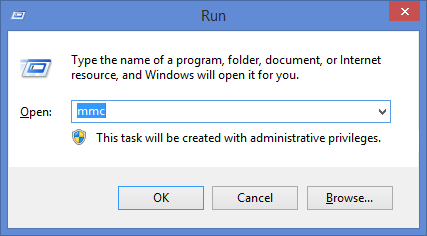
- On the Management Console, click File > Add/Remove Snap-in.
- In the Add or Remove Snap-ins window, click Certificates and then click Add.
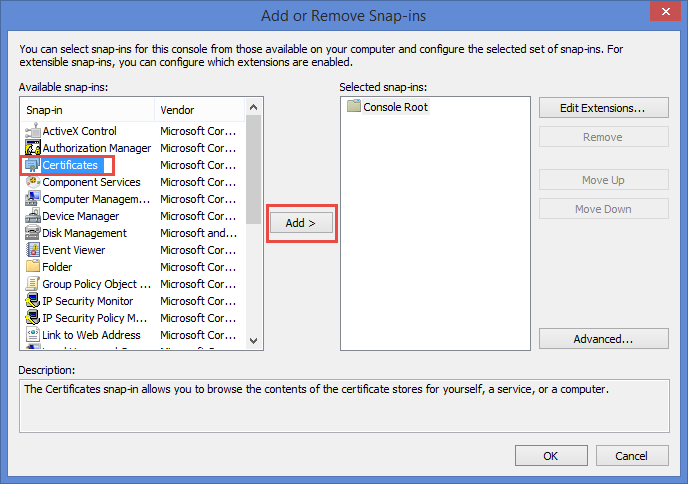
- On the Certificates snap-in window, click Computer account and then click Next.
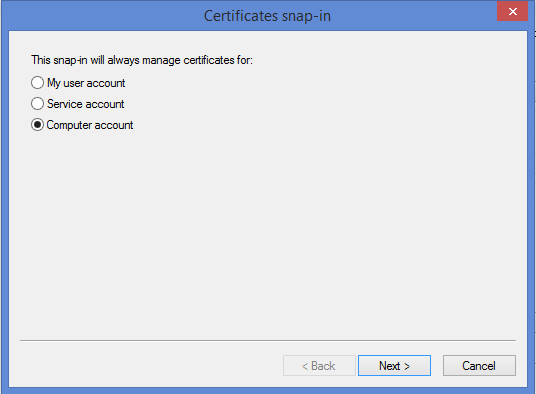
- Select Local computer: (the computer this console is running on) and click Finish.
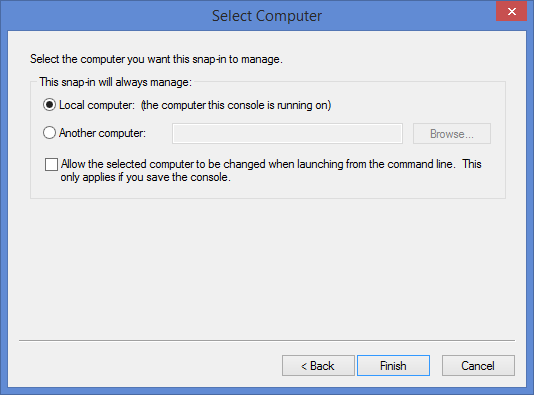
- Click OK to close the Add or Remove Snap-ins window.
- Back in the Management Console, click Certificates to expand the list, right-click Trusted Root Certification Authorities, and select All Tasks > Import.

- On the Import Wizard window, click Next.
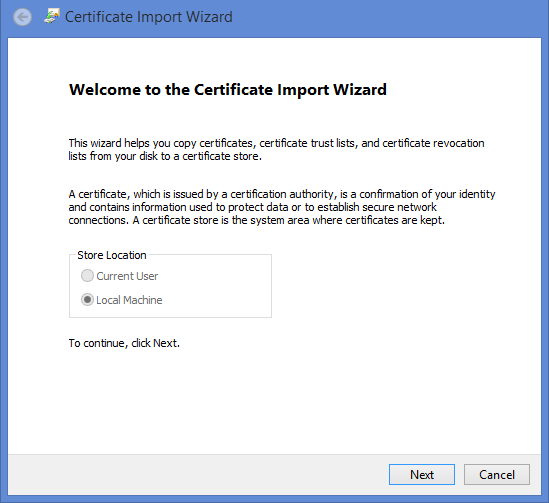
- On the File to Import window, click Browse and open the Star CSR file that you created earlier. Click Next.
- Ensure that Place all certificates in the following store is selected, and click Next.
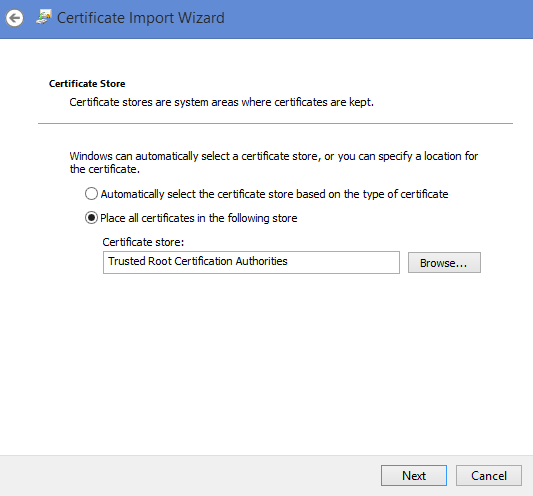
- On the final screen, review the details, and then click Finish. A small window will appear with a The import was successful message.
- To verify that the certificate was added, in the Management Console, expand Certificates > Trusted Root Certification Authority and select Certificates. The printer's IP address should be the first one listed, assuming the list is being sorted by the Issued To column.
- When finished, close the Management Console. You do not have to save console settings (select No).
- If you will be using Meevo with an Apple device, proceed to Step 2c/2d. If not, move on to Step 3 to add the printer to Meevo.
Note: Your Apple device must be on iOS version 11 or later to be able to install a certificate profile.
- On your Apple device, type the printer's IP address into your browser to connect to the printer configuration utility. Despite what your browser indicates, connecting to the printer is safe. Select Show Details, and then select Visit this website.
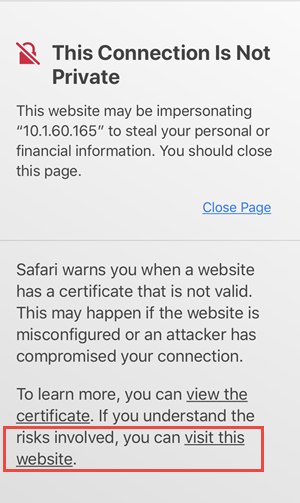
- Log into the utility using the default credentials provided with the printer. For most Star printers, these credentials are username: root and password: public.
- Select SSL/TLS.

- Select Create Self-signed Certificate.

- Scroll to the bottom and select Download.
- Select Allow on the confirmation message, and the Close on the final message.

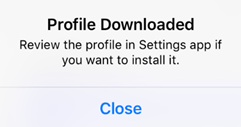
- Next, go to Settings and select Profile Downloaded towards the top of the list.
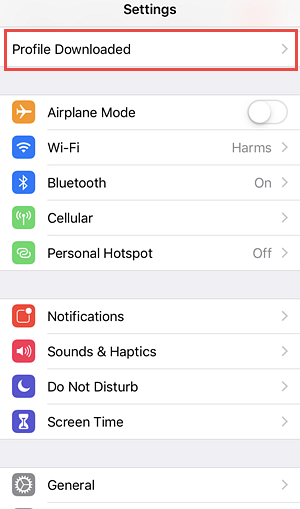
- On the Install Profile screen, select Install in the top-right of the screen.

- Select Install again on the Warning message, and Install once more from the slide-up menu.
- If Verified appears on the Profile Installed screen, this indicates successful installation of the Epson SSL certificate on your Apple device. Select Done, and continue with the steps below to enable the newly installed certificate.
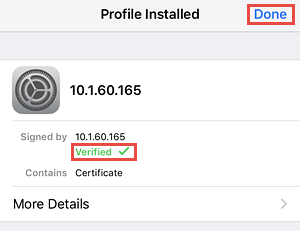
- Next, go to Settings > General > About on your Apple device. Scroll down to Certificate Trust Settings and select it.

- Finally, enable the IP address of the printer and select Continue on the Root Certificate message.
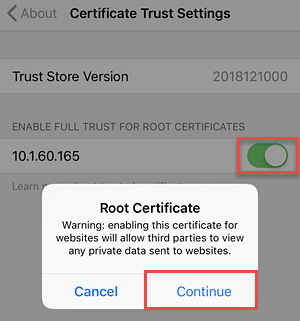
- Proceed to Step 3 to add the receipt printer to Meevo.
Step 2d: Install the SSL Certificate on your MacStep 2d: Install the SSL Certificate on your Mac
- Type the printer's IP address into your browser to connect to the printer configuration utility. Despite what your browser indicates, connecting to the printer is safe. Select Advanced, and then select Proceed to [IP Address].
- Log into the utility using the default credentials provided with the printer. For most Star printers, these credentials are username: root and password: public
- Select the Not secure area of the browser address and select Certificate (Invalid).
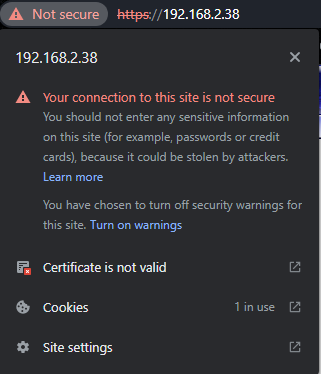
- The certificate pops up; drag the image of the certificate onto your desktop.
- Close your browser (Chrome).
- Double click the certificate image on the desktop. You are prompted for the Mac's username and password so that the certificate can be attached to the keychain. Enter your Mac credentials.
- Click on the certificate in the keychain to open up the details for the certificate. Click Trust, and change the top option to be Always Trust. Closing this window will prompt you once more for the Mac username and password. Enter these Mac credentials.
- Reopen Chrome and Meevo. Log in and trust the printer once again, entering the username and password for the printer.
- Test print and confirm it stays secured.
- Proceed to Step 3 to add the receipt printer to Meevo.
Connection Window (Non-Trust) Mode
In Connection Window Mode, you do not install an SSL certificate on any receipt printers. Instead, a connection between Meevo and the printer is established by a pop-up window that you must not close if you want to print, but you can keep it minimized and out of sight.
Note: Due to the way pop-up windows appear on mobile browsers, this method is not recommended if you are running Meevo primarily on mobile devices.
Benefits:
- Your Meevo browser will always appear secured, but connection to the printer is achieved via a pop-up window that communicates over HTTP instead of HTTPS.
- Does not require you to create a self-signed certificate, so this setup method is quicker than Trust Mode.
Drawbacks:
- A connection between Meevo and the printer is established by a pop-up "printer connection" window that you must not close, but can keep minimized and out of sight.
- The first time you connect to the printer during a session, you will need to connect using the "printer connection" window. This only needs to be done once per session, but it is required for each session.
Important Note for Google Chrome Users:
MSI does not recommend using Non-Trust Mode with Google Chrome because you'll need to disable the Chrome security option Always use secure connections for this mode to work properly. MSI does not recommend turning this option off, as doing so limits your browser's security.
Alternatively, you can use Trust Mode (if you really want to use Google Chrome) or use another supported browser (if you really want to use Non-Trust Mode).
How to set up Connection Window (Non-Trust) Mode:
There are no steps for Connection Window Mode, so you can jump right to Step 3: Add the printer in Meevo below.
Step 3: Add the printer in Meevo
- In Meevo, go to Register > POS Hardware or type poshardware into the Convobar.
- Select the Receipt Printer tab and select Edit.
- Select Add Additional Receipt Printer and fill out all fields exactly as explained below.
- Display Name: Enter a unique name for the device. Make sure you use a name that makes this printer easily identifiable in Meevo lists.
- Brand: Select Star.
- Device Name: Enter local_printer in this field. Do not enter anything in this field other than local_printer.
- IP Address. Enter the IP address exactly as it appears on the receipt printout from Step 1: Hook up the printer.
Remember, if using an Ethernet cable to connect, enter the Ethernet Network IP address.
Important: The IP address for each receipt printer must be static and unique to that printer. Contact your network administrator to ensure that your printer IP address will not change.
- Follow the final steps below according to your setup method:
Trust Mode
- Port: This field is inactive for Star printers.
- Select Use Trust Mode.
- Select Trust
 . A "connection is not secure/private" message appears (the actual message depends on your browser). This is because your browser does not yet "trust" the receipt printer.
. A "connection is not secure/private" message appears (the actual message depends on your browser). This is because your browser does not yet "trust" the receipt printer. - To trust the printer, follow the instructions according to your browser:
- Select Advanced.
- Select Proceed to [IP address]. Despite what your browser indicates, connecting to the printer IS safe.

- The printer's configuration utility screen appears, or a login window to the utility screen appears. Either indicates a successful "trust" between the device and the printer.
- Select Advanced.
- Select Add Exception.
- Select Permanently store this exception.
- Select Confirm Security Exception. Despite what your browser indicates, connecting to the printer is safe.
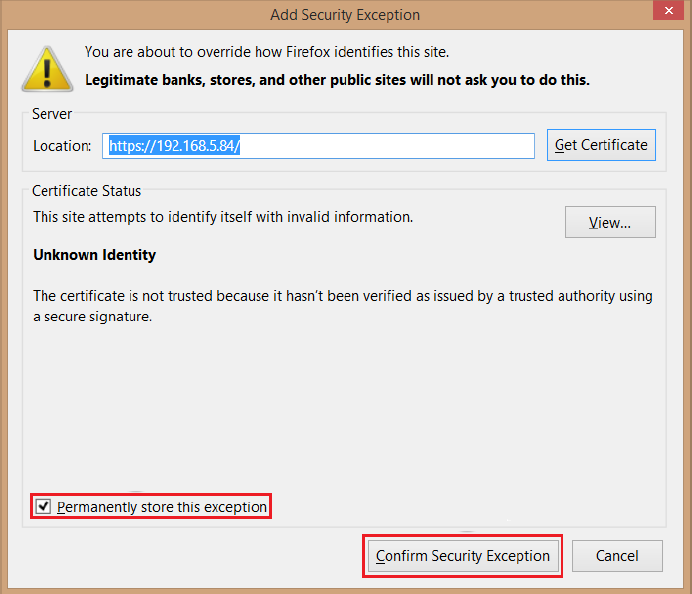
- The printer's configuration utility screen appears, or a login window to the utility screen appears. Either indicates a successful "trust" between the device and the printer.
- Select Show Details.
- Select Visit this Website.
- The printer's configuration utility screen appears, or a login window to the utility screen appears. Either indicates a successful "trust" between the device and the printer.
- Select Test Receipt to send a test receipt to the receipt printer.
Connection Window Mode
- Port: This field is inactive for Star printers.
- Ensure Use Trust Mode is not selected.
- Select Test Receipt to print a test receipt. The Printer Connection window appears. Minimize this window and leave it open to maintain connection to your printer. If you close this window and attempt to print through Meevo, the window will appear again.
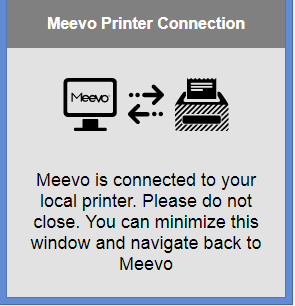
- Select Save to store your changes.